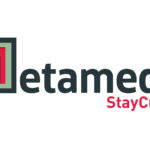
The latest South African economic outlook set for 2022 ranks a few key influencing factors for the year including loadshedding, municipal coalitions, lockdown restrictions and on-going vaccination impetus from government and private organisations who are stating for mandatory vaccinated employee policies. The hybrid working model of online and bricks and mortar seems to be settling into motion.
Risks related to Covid-19 and the spike in the emergence of the Omicron variant and the emergence of international travel bans also played a big part. Automated customer service journeys continue to enhance linear media from broadcast to online, driving audiences from ecommerce websites to large streams of search traffic as it aids social media conversations and purchasing behaviours simultaneously from online and offline sources.
A general target audience’s erratic retail consumption behaviour between online and offline simultaneously make for agile business strategies. In light of these trends The MediaShop team have, in relation to their various business sectors, provided a few insights and business solutions.
Customised Advertising
Colin Ramparsadh says that the potential for customised advertising to go outside of its digital realms to TV is very possible. “Customised Advertising has been perfected by Google and many other digital players. I go to a site and search for a lawnmower and within seconds I’m served with ads from a few different lawnmower providers on my Gmail, Instagram and Facebook account.
I really do believe that this type of customisation can work outside of digital and migrate to platforms like TV. Right now, DSTV can sell their ads either by content (on specific programmes like Blacklist), by genre (travel etc), bouquet (Compact channels only) or by premium audiences. This is available via Catch Up and their Set Top boxes.
Geo targeting by postal code or location is the next step in the process which will ultimately means that marketers will be able to compete with digital ads. If, for instance I was advertising pizza and only wanted to target customers in Randburg this would be possible. We can expect this to happen in the next two to three years.”
Financial category
Gareth Grant says that following the learnings from 2021 around the increased popularity of contactless card payments, he expects to see this grow in popularity, along with the payment transaction amounts increasing beyond the current R500 limit. “We have already seen this abroad in the likes of the UK and Australia, and it’s all in a bid to reduce the need for PIN entry and, of course, less physical touching of the POS device. The other area where we predict growth is an increase in non-traditional payment solution spaces such as Garmin Pay and Fitbit Pay. (some articles to read: https://www2.deloitte.com/za/en/pages/about-deloitte/press-releases/Cashless-and-contactless-payments-in-the-time-of-COVID-19-and-beyond.html ; https://explore.garmin.com/en-ZA/garmin-pay/).
We also can’t underestimate the importance of Reward based approaches for consumers. As we collectively continue to feel the financial pinch of COVID-19, along with the rising fuel price and the looming interest rate hikes, banking reward programmes are set to continue to battle it out for the highest returns. Some banks are even bolting on other rewards like breakfast and meal vouchers when filling up your vehicle, and others are giving you cash back. This space is set to become even more competitive as the banks battle it out for market share gains.”
Entertainment
On the topic of entertainment marketing for 2022, Louise Hefer confirms that the ‘streaming war’ will continue and most likely intensify with new players entering the South African market in 2022. Talks about a mandate of 30% local content for streaming services in South Africa, will add another layer of complexity. How sustainable will this be for international players? We’ll have to wait and see. If this mandate is implemented, we’ll most likely see a decrease in overall titles available as these companies try and sustain the mandate instead of an increase – which in turn impacts the offering available to viewers.
With viewers being spoilt for choice, it’s easier than ever to ‘channel hop’ between different service providers, whether that’s streaming or digital only platforms like YouTube.
Consumers are getting used to watching what they want, when they want and will move on if providers don’t provide that. This in turn will make it even more difficult to retain viewers on a long-term basis. 2022 will highlight the increase in movement of viewership between different service providers – with the determining factor being the content slate on offer. If your content slate isn’t competitive enough, viewers will move on.”
Travel
Muhle Hlabano says that the biggest trend he’s seen in the travel category is for marketers to increase their sustainable travel options. “Nearly three in five travellers are willing to pay more for their trip in order to have a more sustainable outcome,” he says. “73% of consumers would likely choose accommodation that has implemented sustainable practices, with 42% happy to shop at small, independent stores to support the local economy during their travels.
Some of the top environmental themes mentioned in guest reviews that relate to sustainable travel include the requests for single use plastics, improved recycling, electric car charging facilities, LED light bulbs and renewable energy.”
Adapt or thrive
As soon as we adapt rapidly, we will see that survival is around the corner. Investing in social listening and reading data subjectively will be the smartest way to build strong relationships with customers. Winning with customers will make us winners all round!
- Boomtown’s interns design new CI for Ubomi - 16th February 2022
- The Infinite Dial® 2022 South Africa to be presented on 24 February! - 16th February 2022
- It’s Random Acts of Kindness Week, and The Good Things Guy is named one of the world’s top 100 innovation success stories - 16th February 2022






